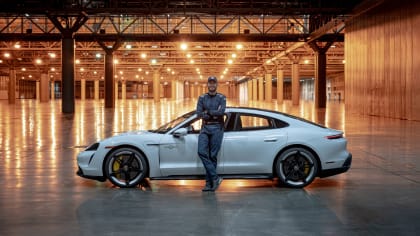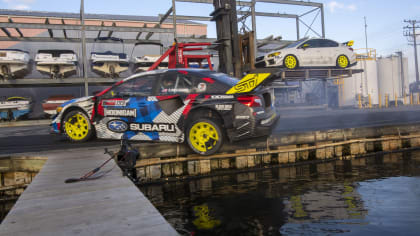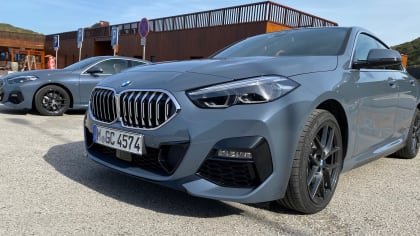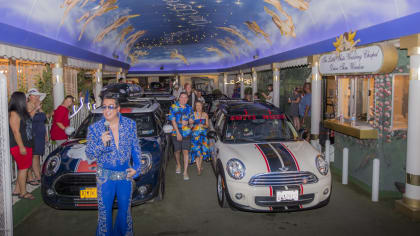Texas Legend - Jim Hall and his Chaparrals

Doug Stokes enjoys another book in his library.
The Frosting on the cake, if you will, of this beautifully-mounted book is a full nineteen-page “illustrated catalog” (my words) of Jim Hall’s “Road Runners”...
By Doug Stokes
Sun, Sep 1, 2024 01:51 PM PST
LACar Book Review
TEXAS LEGEND
Jim Hall and his Chaparrals
“There’s always a better way.”
THE OFFICIAL BIOGRAPHY
by George Levy
EVRO Publishing, UK
ISBN: 978191050663
Hardback 9.4” x 8.3”
484 Pages / 486 Photos
US price: $80.00 CDN: $100.00
...Yeah, you read that right, more photos than pages, but don’t figure that this one is just any sort of a happy talk collection of cool racing photos*. This one is an in-depth study of a man who, in his search for speed, came up with and perfected a whole laundry list of motorsports innovations and put them to work in racing he designed and built machines that at first startled, and then revolutionized, both the American and international racing scene.
Seemingly throwing caution to the wind, the first chapter of this entirely engaging book (entitled “Born To Wings”) lights off with what was a serious plane wreck that almost ended the Jim Hall story almost before it started.
… It was New Years Day 1959, and, at a couple of thousand feet in the air on his way to land at Dallas’ Love Field, twenty-three year old Jim Hall was suddenly trying to arrange a dead-stick landing in a World War 2 P-51 Mustang that was out of fuel, glided like an 8,000-pound rock, and was still a fair distance from the airport … which is not a good idea even in the best of times and for young Jim Hall and this one was a bad one.

Hall came down clipping the roof off a house and ended up with the war bird’s mighty V12 Rolls Royce engine tearing off and hurtling back past him in the aircraft’s bubble cockpit during the clobbering.
A few years before, in august of 1953, Hall had lost virtually all of of his immediate family when his highly-respected geologist father, Ellis, his sister, stepmother, stepsister, and a family friend named Patrick Hibben all were lost 35 miles East of Ketchikan on a return flight from and Alaskan fishing trip aboard his father’s 12-passenger, twin-engine DeHavilland Dove. As author George Levy so aptly alludes to about Hall’s life at that point, Chapter 3 is entitled: “Sudden Adulthood”.

As far as the “Legend” part of the title, the cars that Hall designed, built, and (in many cases) drove to victories across the continent and in Europe (almost always painted in a non-nondescript white) are thought of and revered now (in today’s cookie-cutter world of technically-identical-one model racing cars in two of America top racing series) absolute/classic stand-out anomalies.
These “Chaparrals” (named for the ground-hugging, fast-running Chaparral bird of America’s Southwestern deserts) were, in their time, almost weird-looking machines that raced with and beat the best of them on road courses here and abroad (and even at the Indianapolis 500). The Texans swept in, and in an arc that lasted nearly twenty years, won a lot of races in a lot of places, and then retired to what easily qualifies as legendary status as author Levy so well relates.

When young Jim Hall decided to start racing he simply went out and bought what were then considered state of the art race cars. I remember watching him race at Santa Barbara in his Lister-Chevy. A basic large tube chassis, front-engined, British bolide that was fast and fairly light on it’s feet and that got Hall thinking that (he had a degree in engineering from Cal Tech no less) that, in the words of this book’s subtitle: “There’s always a better way.”.
Here author George Levy has woven a masterful tale of one man’s laser sharp determination and flare for innovation, that’s backed up and certified via interviews of over 100 of Hall’s collaborators and contemporaries including motorsports memory-makers like Mario Andretti, Raul Balcaen, Don Garlits, Bob Lutz, Roger Penske, Dick Smothers, Al and Bobby Unser, and Dan Gurney.
And here, Jim Hall is rightfully credited with an amazing ability to see, sense, and be able harness the air to make his race cars faster than his rivals. He worked to turn theory into road-holding (controllable) down force and created cars with such grip that seasoned champions like Jackie Stewart admitted that when he tested a Chaparral at Riverside he had to tilt his head all the way to the right on the approach to that track’s flat out turn 2 because the g force that the Chaparral developed would try to bend it over onto his left shoulder.

Composite construction (fiberglass at first in Hall’s case) was the way to a super stiff, super light chassis, something that Formula and Sports Car racing eventually came to use decades later in the era of full carbon fiber composite chassis’.
Hall also pioneered controlling the air that went under the car, forming tunnels that acted like venturis, speeding up the air and causing a vacuum effect that (quite literally) sucked the car to the pavement, again allowing higher and higher cornering speeds and great stability.
Virtually every page of Levy’s enlightening and entertaining written record of this amazing story is enlightened and enlivened by some very well-chosen historic photographs that perfectly illustrate the amazing story of Jim Hall’s courting dance with the known physics of aerodynamics as applied to advance racing car design. Theory, expectations, design, operation, and results are all right here for the reader to take in, see and understand the significance of each attempt and every victory.
The Frosting on the cake, if you will, of this beautifully-mounted book is a full nineteen-page “illustrated catalog” (my words) of Jim Hall’s “Road Runners”...

Entitled “The Evolution of Net Downforce” featuring full two-page crossover tech drawings of best of the Hall-designed Chaparrals from the LA Times Grand Prix-winning 2 right on through to the 2K which flat dominated the 1979 Indianapolis 500. And each is accompanied by Jim Hall’s personal notes and assessment of the design…a condensed master class in theory and practical application, that’s as interesting as it is informative.
… In fact, and if I may, I’d recommend first opening this book to page 457 and perusing the above catalog of Hall’s amazing Chaparrals first. This is not a suspense novel, and knowing a little about each of his machine’s reasons for being as well as it’s racing record would be a great way to get into the background and design of each of these technically bold racing cars that this authentic “Texas Legend” and his team produced along the way.
*Author Levy’s well-paced and informative text is quite simply a perfect match for the photos that he and his editor (Mark Hughes) and designer (Richard Parsons) have chosen to illustrate and augment his writing. The reading and the looking blend perfectly here. The sensation of speed and advanced engineering is present on every page.
And here (just below), and because of some personal time constraints, I’m going to bow to and the publisher’s very accurate assessment of this book and run it with the acknowledgment that even as it came directly from them. I’ll add that portrait of this book that they paint is almost precisely what I would have been saying about this book that celebrates an iconic figure in American motorsports and his enormous and lasting impact on contemporary race car design and function.
One of the greatest drivers of his generation, Jim Hall is even better known as an innovator. From tiny Chaparral Cars in Midland, Texas emerged a series of vehicles that changed the face of racing. His high-winged Chaparral 2E Can-Am car and 2F World Sportscar Championship contender may be the most influential race vehicles of the 20th century.
Today, every Formula 1 car uses net down force, driver-adjustable wings, composite chassis, side-mounted radiators, semi-automatic gearboxes and advanced telemetry to optimize vehicle performance — all things Chaparral pioneered in the mid-1960s.
Here he tells his story — his life, his cars, his relationship with Chevrolet, his partnership with Hap Sharp, his battles with sanctioning body bureaucracies — for the first time, to award-winning author George Levy in this authorized biography.
First-ever book in which Hall tells his own story.
The massive influence of his introduction of net down-force to racing, which is now incorporated into the design of every major type of four-wheel competition vehicle.
How Hall shocked the world with innovative designs that won in every series in which they competed, including Can-Am, Trans-Am, the World Sportscar Championship, Formula 5000, United States Road Racing Championship, Canadian Sports Car Championship and the Indianapolis 500.
How Jim and John Barnard created the Chaparral 2K ‘Yellow Submarine’ that won the Indianapolis 500 and USAC national championship, setting the template for the modern Indy car.
The massive resistance Jim faced from teams and sanctioning bodies intent on outlawing his legal but game-changing innovations.
The connection to Chevrolet and the crucial role Chaparral Cars played in the defense of GM during the Corvair trials of the mid-1960s.
How Hall became a national celebrity, with Newsweek and Sports Illustrated covers, Coca-Cola commercials, and millions of ‘Jim Hall Authorized’ Cox slot cars and model kits.
Text based on the author’s extensive interviews with over 100 racing standouts, including Jim and Sandy Hall, Roger Penske, Jackie Stewart, Dan Gurney, Sam Posey, Jim Hall II, Brian Redman, Al and Bobby Unser, Bernie Ecclestone, Johnny Rutherford, Gordon Murray, Adrian Newey, Mario Andretti, Bob Lutz and Tony Southgate.
Big, beautiful and packed with facts and anecdotes, the book is lavishly illustrated with period photographs by many of the world’s best motorsports photographers, including Pete Biro, Bernard Cahier, Hal Crocker, Dave Friedman, Pete Lyons, Dan Boyd, Lionel Birnbom and Pulitzer Prize winner Bob Jackson.
- courtesy Evro Publishing 2024
And, just so you know, here’s what it says about this book’s author on the handy-dandy poopsheet that came along with our review copy:
After a distinguished career as a motorsports author, speaker and historian, George Levy is now President of the Motorsports Hall of Fame of America, based at Daytona Beach, Florida, which honored Jim Hall as an inductee in 1994. Levy began his journalism career in 1980 at AutoWeek, where he rose to the position of editor at 27. He has also contributed to RACER, Car and Driver and Vintage Motorsport. Latterly he has turned to writing books and is best known for Can-Am 50th Anniversary: Flat Out with North America's Greatest Race Series, which earned a Gold Medal in the 2017 International Automotive Media Competition, and Fl Mavericks: The Men and Machines that Revolutionized Formula 1 Racing.
(… and all of the above are recommended highly by the author of this LACar review)
The publisher indicates a limited number of copies signed by Mister Hall himself are available through their website www.evropublishing.com at $113.00 each.
(A portion of the proceeds from the sale of this book will benefit The Motorsports Hall of Fame of America in Daytona Beach, Florida)
About The Author
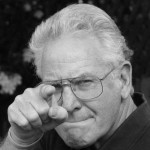
Doug has a long and wide-ranging history in the motoring business. He served five years as the Executive Director of the International Kart Federation, and was the PR guy for the Mickey Thompson's Off-Road Championship Gran Prix. He worked racing PR for both Honda and Suzuki and was a senior PR person on the first Los Angeles (Vintage) Grand Prix. He was also the first PR Manager for Perris Auto Speedway, and spent over 20 years as the VP of Communications at Irwindale Speedway. Stokes is the recipient of the American Autowriters and Broadcaster’s 2005 Chapman Award for Excellence in Public Relations and was honored in 2015 by the Motor Press Guild with their Dean Batchelor Lifetime Achievement Award. 2025 saw Stokes voted into the Go Kart Hall of Fame. “… I’ve also been reviewing automobiles and books for over 20 years, and really enjoy my LACar assignments.” he added.

